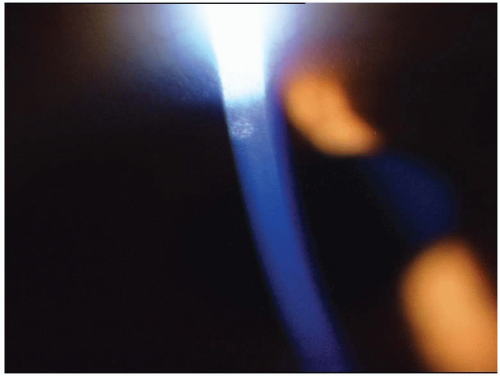such infection rates was because of patients reinserting poorly disinfected lenses. It was hypothesized that using lenses on a disposable or frequent replacement basis, in which the lenses were inserted once only and then discarded upon removal, would likely have an impact on the infection rates reported. Such a concept became a clinical reality with the introduction of disposable EW lenses to the United States in 1987. The first published large-scale study appeared to support such a concept,25 but soon thereafter reports of infectious keratitis started to appear.26 The final proof that disposability had no impact on the rate of ulceration with conventional hydrogel materials worn overnight came with the publication of a paper in 1999,7 which showed that the rate of ulcerative keratitis was exactly that found 10 years previously in the United States,6 before disposability was commonplace. This publication clearly showed that overnight wear with conventional soft lens materials should be discouraged because of the increased risk that such a modality had on the development of sight-threatening keratitis.
−3.00 D lenses. It must be remembered that these Dk/t values will be lower for positively powered lenses and high minus lenses because of the increased lens thickness inherent with such lens designs.
TABLE 16.1 COMMON CONVENTIONAL HYDROGEL CONTACT LENS MATERIALS | ||||||||||||||||||||||||||||||||||||||||||||||||||||||||||||||||||||||||||||||
|---|---|---|---|---|---|---|---|---|---|---|---|---|---|---|---|---|---|---|---|---|---|---|---|---|---|---|---|---|---|---|---|---|---|---|---|---|---|---|---|---|---|---|---|---|---|---|---|---|---|---|---|---|---|---|---|---|---|---|---|---|---|---|---|---|---|---|---|---|---|---|---|---|---|---|---|---|---|---|
| ||||||||||||||||||||||||||||||||||||||||||||||||||||||||||||||||||||||||||||||
majority of patients.81,82,83 Of these, the Menicon Z material is the only GP material that is FDA approved for up to 30 nights CW and has proven to be successful when worn in this way.84,85,86,87
TABLE 16.2 COMMON RIGID LENS MATERIALS | ||||||||||||||||||||||||||||||||||||||||||||||||||||||||||||||||||||
|---|---|---|---|---|---|---|---|---|---|---|---|---|---|---|---|---|---|---|---|---|---|---|---|---|---|---|---|---|---|---|---|---|---|---|---|---|---|---|---|---|---|---|---|---|---|---|---|---|---|---|---|---|---|---|---|---|---|---|---|---|---|---|---|---|---|---|---|---|
| ||||||||||||||||||||||||||||||||||||||||||||||||||||||||||||||||||||
lenses (lotrafilcon B) are based on very similar technology. These lenses are manufactured via a cast molding process, as are all the other silicone hydrogel lenses, with the exception of CIBA Vision’s final offering, the O2OPTIX Custom lens (sifilcon A), which is lathe-cut.108 This lens is available in a wide variety of parameters108 and is an ideal option for patients who require silicone hydrogels but are outside the conventional parameter range offered by the majority of frequent replacement lenses, thus needing a custom-made option.109,110 The surfaces of all four lenses are permanently modified in a gas plasma chamber using a mixture of trimethylsilane oxygen and methane to create a permanent, ultrathin (25 nm), high refractive index, continuous hydrophilic surface.93,99,102,111,112,113 Focus Night & Day is approved for up to 30 nights of CW and successful results have been reported with the lens used in this manner52,105,114,115,116,117,118,119 and it is also approved for use as a therapeutic lens.37,38,39,40,106,120,121 On a daily wear basis both lotrafilcon materials have proven to be clinically successful.122,123,124,125
TABLE 16.3 SILICONE HYDROGEL LENS MATERIALS | ||||||||||||||||||||||||||||||||||||||||||||||||||||||||||||||||||||||||||||||||||||||||||||||||
|---|---|---|---|---|---|---|---|---|---|---|---|---|---|---|---|---|---|---|---|---|---|---|---|---|---|---|---|---|---|---|---|---|---|---|---|---|---|---|---|---|---|---|---|---|---|---|---|---|---|---|---|---|---|---|---|---|---|---|---|---|---|---|---|---|---|---|---|---|---|---|---|---|---|---|---|---|---|---|---|---|---|---|---|---|---|---|---|---|---|---|---|---|---|---|---|---|
| ||||||||||||||||||||||||||||||||||||||||||||||||||||||||||||||||||||||||||||||||||||||||||||||||
Stay updated, free articles. Join our Telegram channel

Full access? Get Clinical Tree



